Exhibit 99.1
Financial Report
January – March 2023
Stockholm, Sweden, April 21, 2023
(NYSE: ALV and SSE: ALIV.sdb)
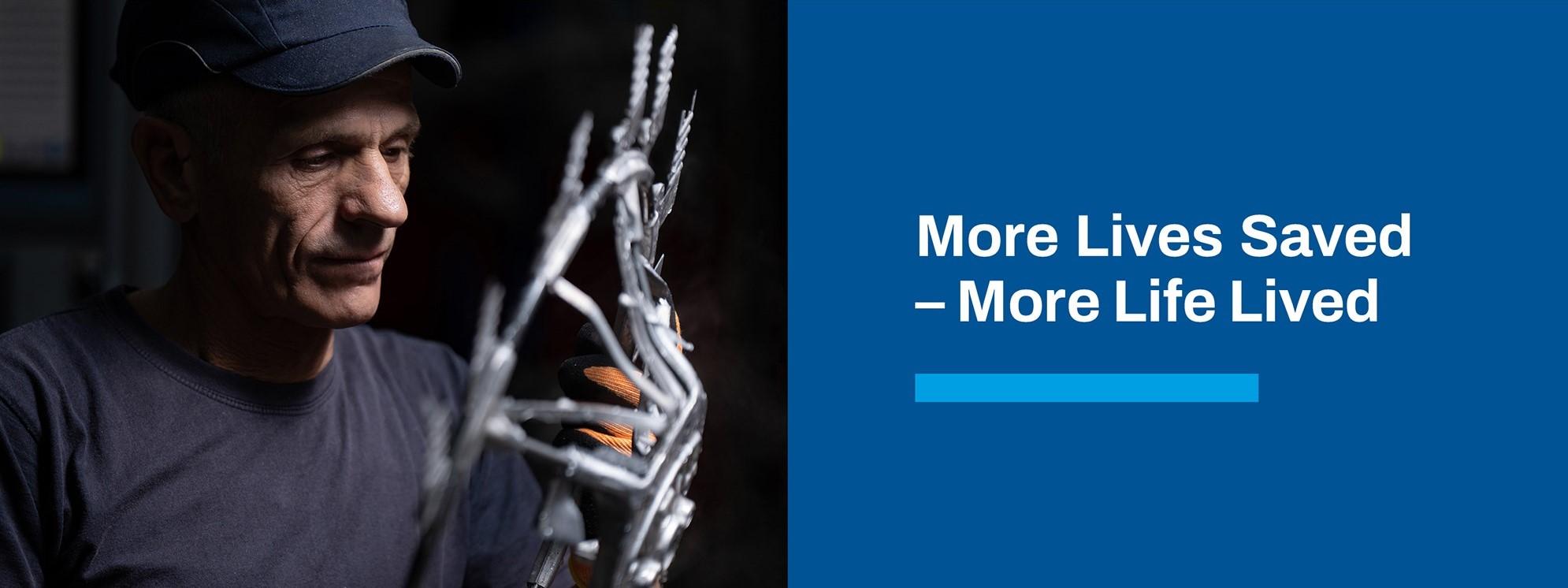
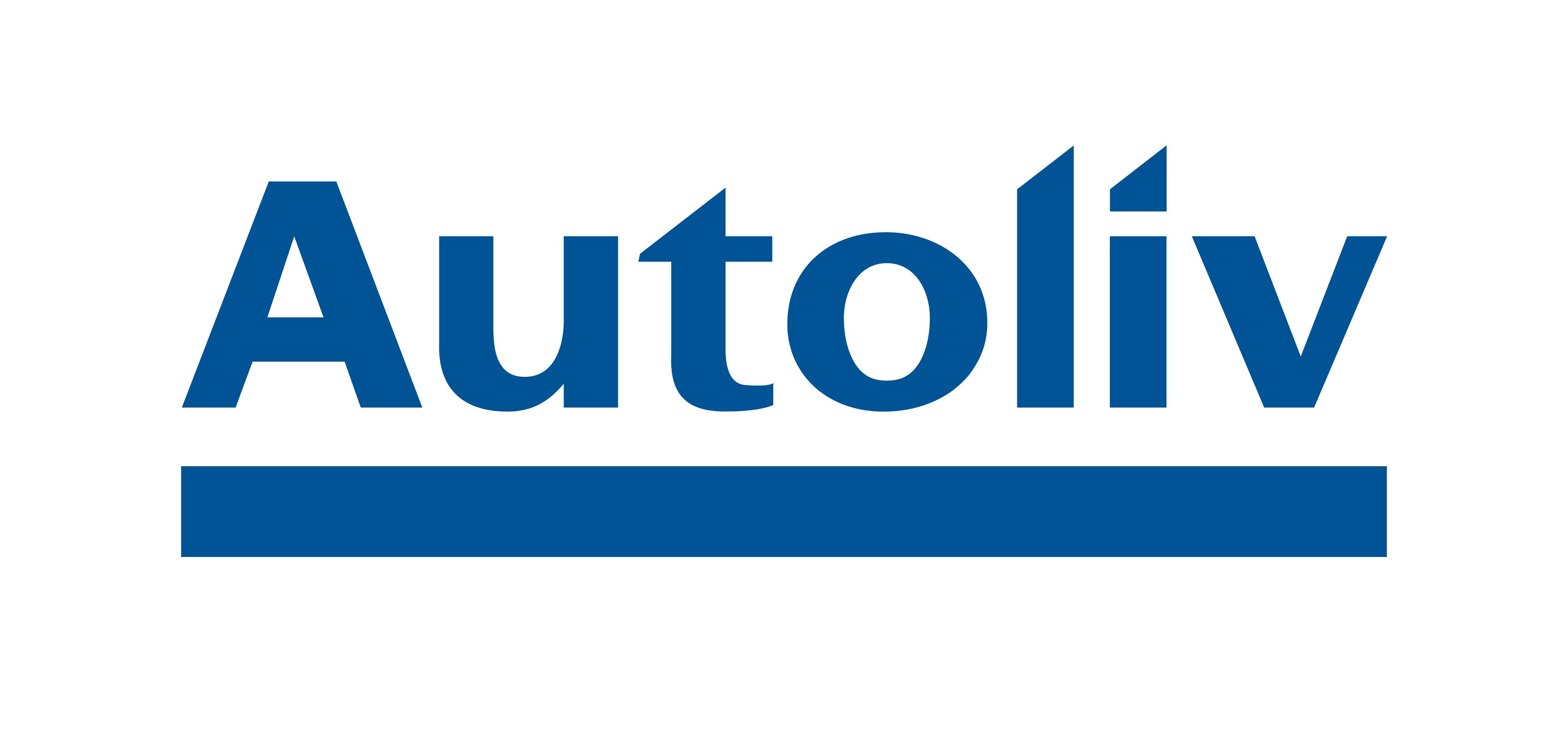
|
Financial Report January - March 2023 |
Q1 2023: Strong sales growth
| | |
Financial highlights Q1 2023 $2,493 million net sales 17% net sales increase 21% organic sales increase* 5.1% operating margin 5.3% adjusted operating margin* $0.86 EPS - 9% decrease $0.90 adjusted EPS* - 99% increase | | Full year 2023 indications Around 15% organic sales growth Around 1% negative FX effect on net sales Around 8.5%-9.0% adjusted operating margin Around $900 million operating cash flow |
All change figures in this release compare to the same period of the previous year except when stated otherwise.
Key business developments in the first quarter of 2023
•Sales increased organically* by 21%, which was 15pp better than global LVP growth of 6.1% (S&P Global April 2023). We outperformed significantly in all regions, mainly due to new product launches and higher prices.
•Profitability in line with our indication, positively impacted by price increases, organic growth and our cost reduction activities. Operating income was $127 million and operating margin was 5.1%. Adjusted operating income* improved from $68 million to $131 million and adjusted operating margin* increased from 3.2% to 5.3%, despite inflationary pressure, volatile LVP and adverse FX effects. Return on capital employed was 13.0% and adjusted return on capital employed* was 13.4%.
•Operating cash flow decreased from $70 million to negative $46 million, driven mainly by negative working capital effects due to the high sales growth. Free cash flow* decreased to negative $189 million, as capex, net, increased due to capacity expansions and footprint activities. The leverage ratio* increased from 1.4x in the fourth quarter 2022 to 1.6x, impacted by higher net debt. A dividend of $0.66 per share was paid, and 0.45 million shares were repurchased and retired in the quarter.
|
*For non-U.S. GAAP measures see enclosed reconciliation tables. |
Key Figures
| | | |
(Dollars in millions, except per share data) | Q1 2023 | Q1 2022 | Change |
Net sales | $2,493 | $2,124 | 17% |
Operating income | 127 | 134 | (5.4)% |
Adjusted operating income1) | 131 | 68 | 93% |
Operating margin | 5.1% | 6.3% | (1.2)pp |
Adjusted operating margin1) | 5.3% | 3.2% | 2.1pp |
Earnings per share2) | $0.86 | $0.94 | (8.8)% |
Adjusted earnings per share1,2) | 0.90 | 0.45 | 99% |
Operating cash flow | (46) | 70 | n/a |
Return on capital employed3) | 13.0% | 14.6% | (1.6)pp |
Adjusted return on capital employed1,3) | 13.4% | 7.4% | 6.0pp |
1) Excluding effects from capacity alignment and antitrust related matters. Non-U.S. GAAP measure, see reconciliation table. 2) Assuming dilution when applicable and net of treasury shares. 3) Annualized operating income and income from equity method investments, relative to average capital employed. |
| | | |
Comments from Mikael Bratt, President & CEO | | |

| I am pleased with our strong sales growth, supported by product launches and price increases, and that we outperformed LVP in all regions significantly. The operating margin impact of the strong sales growth was lower than it should be in the quarter. This is because new product launches normally have lower operating leverage initially. As production ramps up and | We expect a strong full year cash flow, although our cash flow was temporarily weak in Q1 due to strong sales growth in March. We saw continued updates of crash test standards and safety regulations in the U.S. and in India which will support continued increase in safety content per vehicle. Our market position is strong, and we are investing for increased production with a new textile facility in Vietnam. We also continue to look for ways to improve our footprint and to reduce our costs structurally. The year has so far developed as expected. Like last year, inflationary pressure impacted the first quarter significantly, and in line with last year, we expect to offset this during the rest of the year through productivity, cost reduction actions and price adjustments. This supports my confidence in expecting a gradually improving adjusted operating margin, which should allow us to deliver a significant full year increase in cash flow and adjusted operating income and to reach the full year indications we set at the beginning of the year. |
stabilizes, operating leverage is expected to improve. Together with our actions for cost reductions and price adjustments, this will give the significant full year profit improvement that we expect. The operating environment in the first quarter 2023 was, as expected, challenging, especially in Europe. We reported an adjusted operating margin in line with prior communication. Other highlights in the quarter were that our balance sheet and expected cash flow allowed for continued high shareholder returns, and that we issued our first ever green bond. |
2
|
Financial Report January - March 2023 |
Full year 2023 indications
Our outlook indications for 2023 are mainly based on our customer call-offs, a full year 2023 global LVP growth of around 3%, that we achieve our targeted cost compensation effects and that customer call-off volatility is reduced.
| | | |
| Full Year Indication | | Full Year Indication |
Organic sales growth | Around 15% | Tax rate2) | Around 32% |
FX impact on net sales | Around 1% negative | Operating cash flow3) | Around $900 million |
Adjusted operating margin1) | Around 8.5%-9% | Capex, net, of sales | Around 6% |
1) Excluding effects from capacity alignments, antitrust related matters and other discrete items. 2) Excluding unusual tax items. 3) Excluding unusual items. |
The forward-looking non-U.S. GAAP financial measures above are provided on a non-U.S. GAAP basis. Autoliv has not provided a U.S. GAAP reconciliation of these measures because items that impact these measures, such as costs and gains related to capacity alignments and antitrust matters, cannot be reasonably predicted or determined. As a result, such reconciliation is not available without unreasonable efforts and Autoliv is unable to determine the probable significance of the unavailable information.
Conference call and webcast
An earnings conference call will be held at 2:00 p.m. CET today, April 21, 2023. Information regarding how to participate is available on www.autoliv.com. The presentation slides for the conference call will be available on our website shortly after the publication of this financial report.
3
|
Financial Report January - March 2023 |
Business and market condition update
Supply Chain
Global light vehicle production growth year-over-year was around 6.1% (according to S&P Global April 2023) in Q1 2023, negatively impacted by industry supply chain disruptions. Industry supply chain disruptions also led to low customer demand visibility and material changes to customer call-offs with short notice, which negatively impacted our production efficiency and profitability in the quarter. We expect the current industry-wide supply chain disruptions to be a limiting factor for the global LVP in the first half year of 2023, while we expect that demand and supply will be in a better balance in the second half of 2023.
Inflation
In Q1 2023, cost pressures from labor, logistics, utilities and other items had a negative impact on our profitability. Rising raw material costs amounted to around 0.5pp in operating margin headwind in Q1 2023, which was largely offset by commercial customer recoveries. We expect the raw material price changes in 2023 will to a large extent be reflected in price changes in our products, albeit with delays of several months. We also expect significant cost pressure from broad based inflation relating to labor, logistics, utilities and other items, especially in Europe. We continue to execute on productivity and cost reduction activities to offset these cost pressures, and we are continuing to have challenging discussions with our customers on non-raw material cost inflation.
Other matters
Direct COVID-19 related costs and governmental support in connection with the COVID-19 pandemic were immaterial in the first quarter of 2023.
The direct impact of the war in Ukraine on our business is limited. Autoliv has one facility with fewer than 20 employees in Russia. Our operations in Russia are currently suspended. Autoliv net assets in Russia consist of USD cash items, which amount to around $3 million. Autoliv has no operations in Ukraine.
This report includes content supplied by S&P Global; Copyright © Light Vehicle Production Forecast, January and April 2023. All rights reserved.
4
|
Financial Report January - March 2023 |
Key Performance Trends
| |
Net Sales Development by region | Operating and adjusted operating income and margins |
| |

| 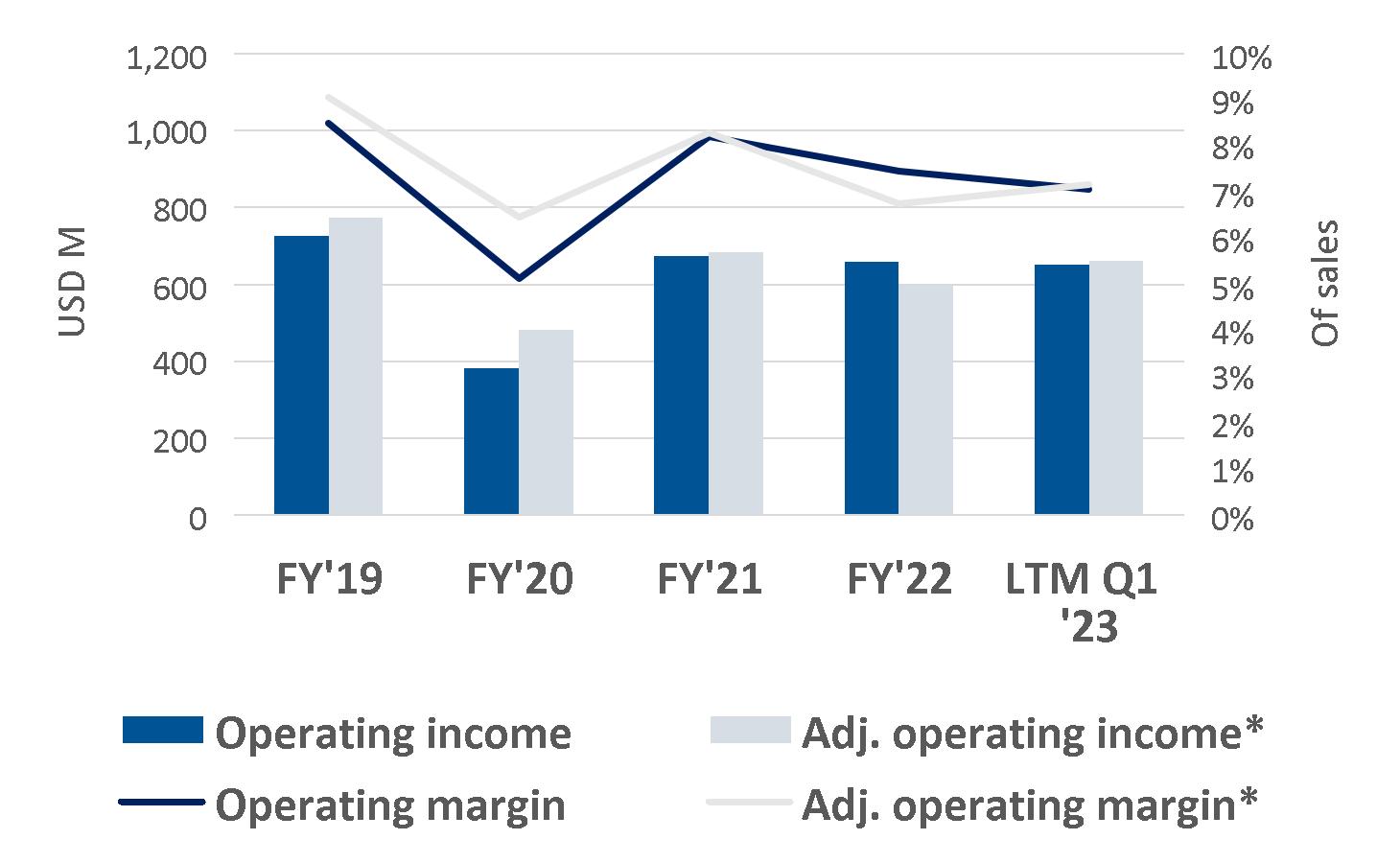
|
| |
Capex and D&A | Operating and adjusted operating Cash Flow |
| |
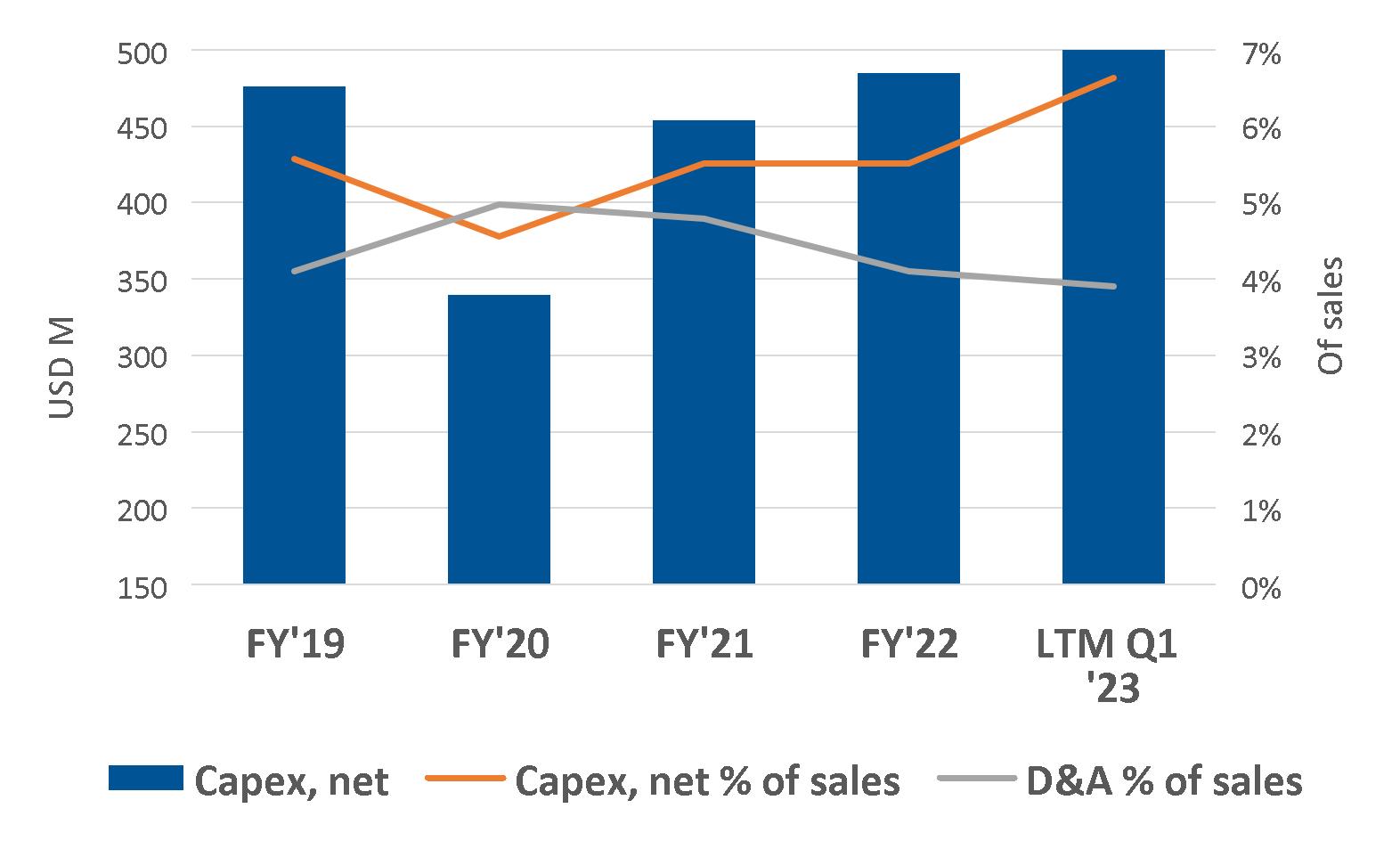
| 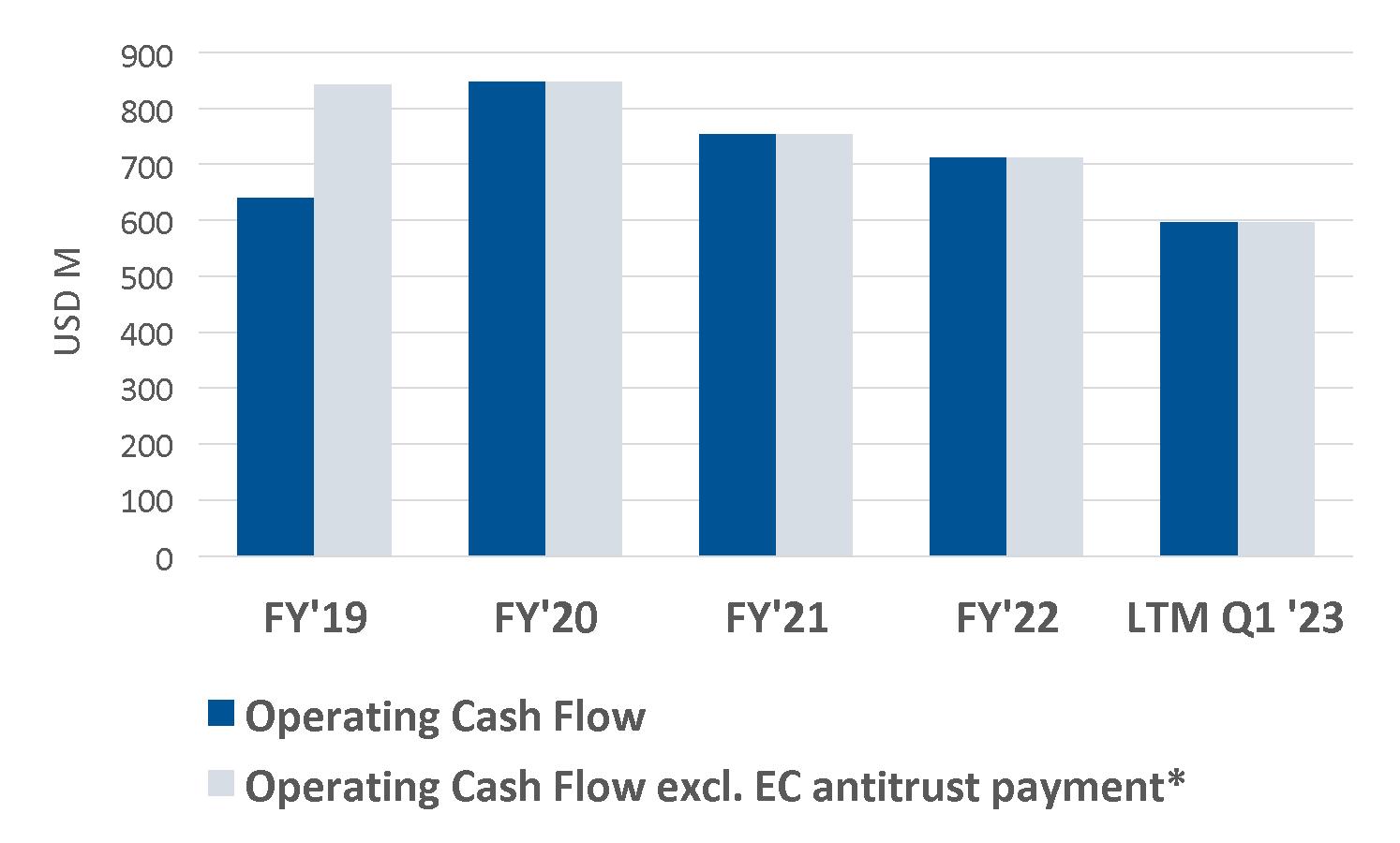
|
| |
Return on Capital Employed | Cash Conversion* |
| |
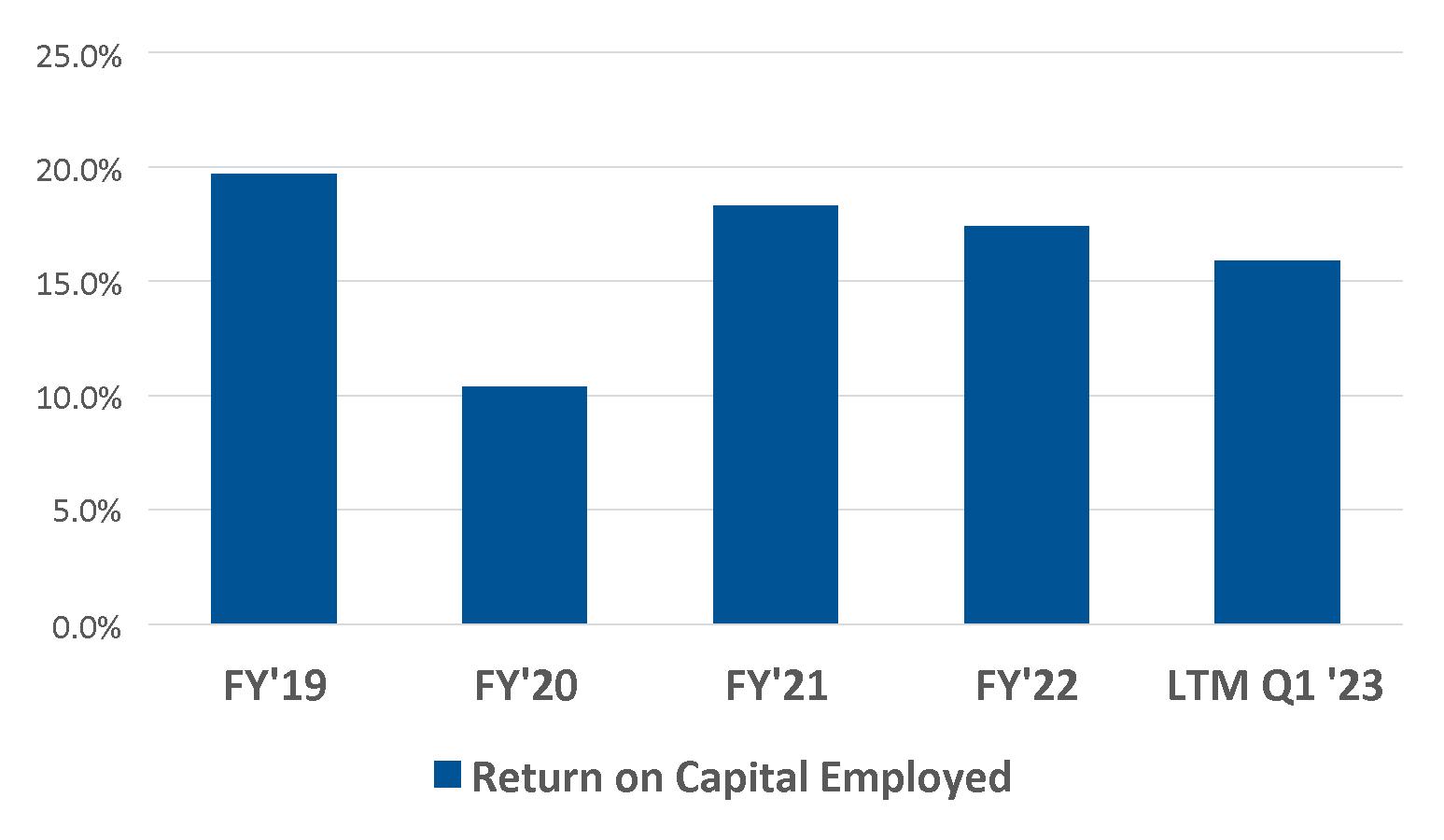
| 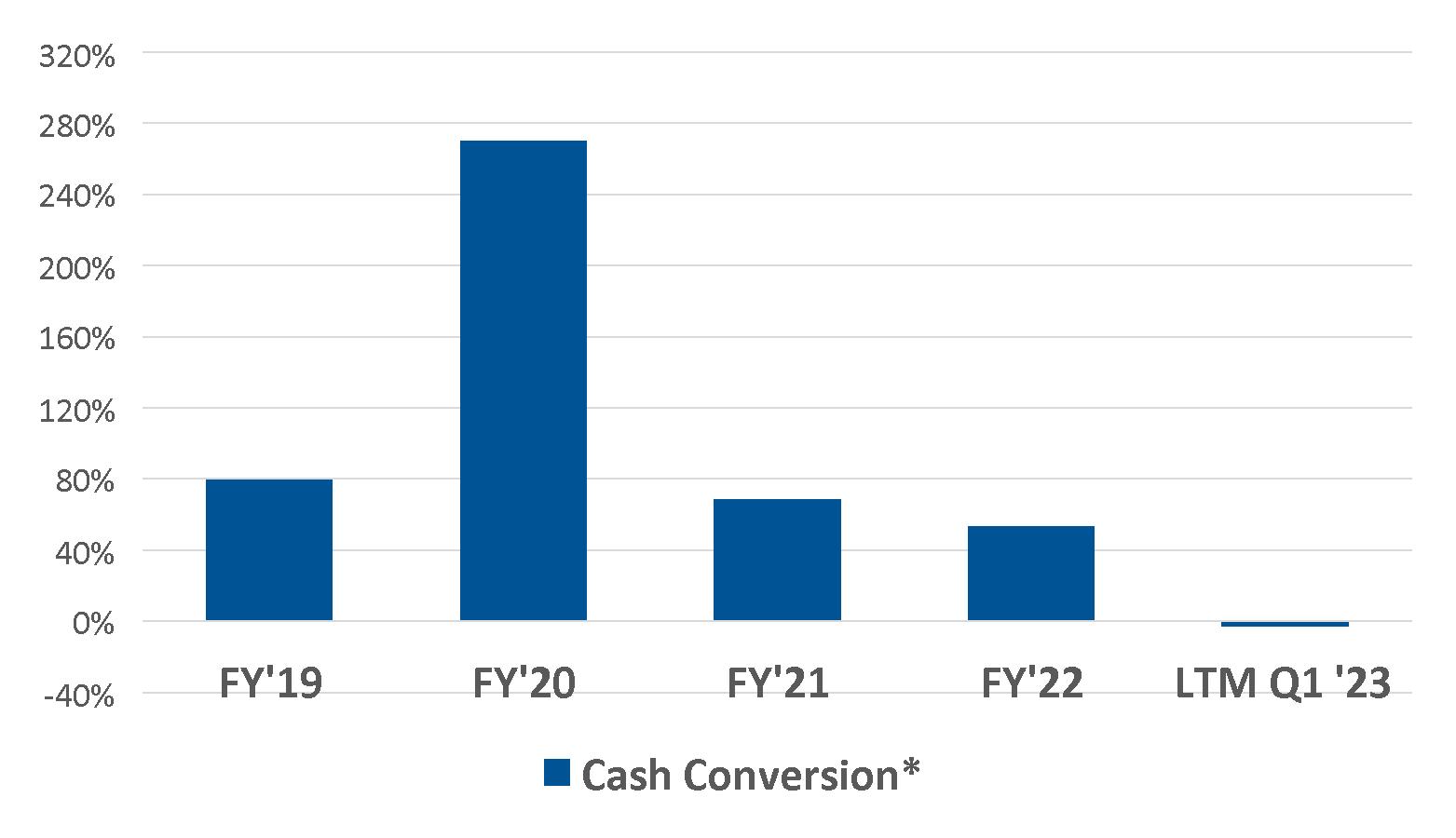
|
Key definitions ------------------------------------------------------------------------------------------------------------
| | |
Capex, net: Capital Expenditure, net. D&A: Depreciation and Amortization. Adj. operating income and margin*: Capacity alignments include non-recurring costs related to our structural efficiency and business cycle management programs. | | Operating cash flow excluding EC antitrust payment*: Adjusted for EC antitrust payment of $203 million in 2019. Cash conversion*: Free cash flow* in relation to net income adjusted for EC antitrust payment in 2019. Free cash flow defined as operating cash flow less capital expenditure, net. |
5
|
Financial Report January - March 2023 |
Consolidated sales development
First quarter 2023
| | | | | | |
Consolidated sales | | First quarter | Reported
(U.S. GAAP) | Currency
effects1) | Organic
change* |
(Dollars in millions) | | 2023 | 2022 | | | |
Airbags, Steering Wheels and Other2) | | $1,673 | $1,381 | 21% | (3.6)% | 25% |
Seatbelt Products2) | | 820 | 744 | 10% | (3.5)% | 14% |
Total | | $2,493 | $2,124 | 17% | (3.6)% | 21% |
| | | | | | |
Asia | | $936 | $857 | 9.2% | (7.8)% | 17% |
Whereof: | China | 453 | 447 | 1.2% | (7.2)% | 8.4% |
| Asia excl. China | 483 | 410 | 18% | (8.4)% | 26% |
Americas | | 831 | 692 | 20% | 2.4% | 18% |
Europe | | 725 | 575 | 26% | (4.6)% | 31% |
Total | | $2,493 | $2,124 | 17% | (3.6)% | 21% |
1) Effects from currency translations. 2) Including Corporate and other sales. |
| | |
Sales by product – Airbags, Steering Wheels and Other All major product categories increased organically* in the quarter. The largest contributor to the increase was inflatable curtains and steering wheels, followed by side airbags and passenger airbags. | | Sales by product - Seatbelts The main contributor to Seatbelt products organic growth* was Europe, followed by Asia excluding China and Americas. |
| | |
Sales by region Our global organic sales* increased by 21% compared to the global LVP increase of 6.1% (according to S&P Global, April 2023). The 15pp outperformance was driven by new product launches, price increases and a positive geographical LVP mix development. | | Autoliv outperformed LVP by around 16pp in China, by around 14pp in Europe and in Asia excl. China and by around 7pp in Americas. |
| | | | | |
Q1 2023 organic growth* | Americas | Europe | China | Asia excl. China | Global |
Autoliv | 18% | 31% | 8.4% | 26% | 21% |
Main growth drivers | Honda, Nissan, GM | VW, Stellantis, Renault | Lixiang Auto, Honda, BYD | Hyundia, Toyota, Nissan | Honda, Hyundai, VW |
Main decline drivers | Ford, BMW | Mitsubishi | Nissan, GM, Xpeng | | Ford, Xpeng, Great Wall |
Light vehicle production development
Change vs same period last year according to S&P Global
| | | | | |
Q1 2023 | Americas | Europe | China | Asia excl. China | Global |
LVP (Apr 2023) | 11% | 17% | (7.5)% | 12% | 6.1% |
LVP (Jan 2023) | 7.1% | 5.9% | (8.1)% | 9.7% | 2.6% |
6
|
Financial Report January - March 2023 |
Key launches in the first quarter 2023
| | | | | |
Fisker Ocean  | | Subaru Impreza/Crosstrek | | Buick Electra E5  | |

| | 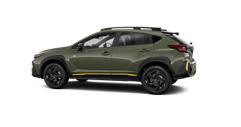
| | 
| |
      
| |    
| |    
| |
| | | | | |
Jeep Avenger  | | Hyundai Kona  | | Havel H-Dog  | |

| | 
| | 
| |
   
| |    
| |  
| |
| | | | | |
Xpeng P7i  | | Toyota Prius  | | Chevrolet Trax | |

| | 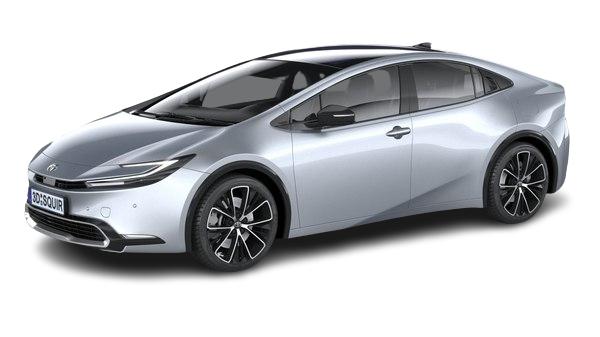
| | 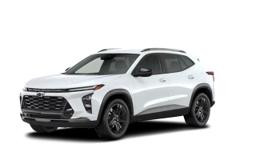
| |
   
| |     
| |     
| |
| | | | | | |
| 
| Driver/Passenger Airbags | 
| Seatbelts | 
| Side Airbags |
| 
| Head/Inflatable Curtain Airbags | 
| Steering Wheel | 
| Knee Airbag |
| 
| Front Center Airbag | 
| Bag-in-Belt | 
| Pyrotechnical Safety Switch |
| 
| Pedestrian Airbag | 
| Hood Lifter | 
| Available as EV/PHEV |
7
|
Financial Report January - March 2023 |
Financial development
Selected Income Statement items
| | | |
Condensed income statement | First quarter |
(Dollars in millions, except per share data) | 2023 | 2022 | Change |
Net sales | $2,493 | $2,124 | 17% |
Cost of sales | (2,113) | (1,836) | 15% |
Gross profit | $379 | $288 | 32% |
S,G&A | (132) | (115) | 14% |
R,D&E, net | (116) | (107) | 8.7% |
Amortization of intangibles | (0) | (1) | (70)% |
Other income (expense), net | (4) | 70 | n/a |
Operating income | $127 | $134 | (5.4)% |
Adjusted operating income1) | $131 | $68 | 93% |
Financial and non-operating items, net | (18) | (15) | 22% |
Income before taxes | $109 | $119 | (8.8)% |
Income taxes | (34) | (36) | (5.0)% |
Net income | $74 | $83 | (11)% |
Earnings per share2) | 0.86 | 0.94 | (8.8)% |
Adjusted earnings per share1,2) | $0.90 | $0.45 | 99% |
| | | |
Gross margin | 15.2% | 13.6% | 1.6pp |
S,G&A, in relation to sales | (5.3)% | (5.4)% | 0.1pp |
R,D&E, net in relation to sales | (4.7)% | (5.0)% | 0.4pp |
Operating margin | 5.1% | 6.3% | (1.2)pp |
Adjusted operating margin1) | 5.3% | 3.2% | 2.1pp |
Tax Rate | 31.6% | 30.3% | 1.3pp |
| | | |
Other data | | | |
No. of shares at period-end in millions3) | 85.8 | 87.4 | (1.8)% |
Weighted average no. of shares in millions4) | 86.1 | 87.5 | (1.7)% |
Weighted average no. of shares in millions, diluted4) | 86.3 | 87.8 | (1.7)% |
1) Non-U.S. GAAP measure, excluding effects from capacity alignment and antitrust related matters. See reconciliation table. 2) Assuming dilution when applicable and net of treasury shares. 3) Excluding dilution and net of treasury shares. 4) Net of treasury shares. |
| | |
First quarter 2023 development Gross profit increased by $91 million and the gross margin increased by 1.6pp compared to the same quarter 2022. The gross profit increase was primarily driven by price increases, volume growth and lower costs for premium freight. This was partly offset by increased costs for personnel to manage the high customer call-off volatility as well as to prepare for higher sales levels expected in coming quarters. Other adverse effects were higher costs for raw materials and unfavorable FX translation effects. S,G&A costs increased by $16 million compared to the prior year, mainly due to increased costs for personnel and projects, partly offset by positive currency translation effects. S,G&A costs in relation to sales decreased from 5.4% to 5.3%. R,D&E, net costs increased by around $9 million compared to the prior year, mainly due to higher costs for personnel, partly offset by positive currency translation effects. R,D&E, net, in relation to sales decreased from 5.0% to 4.7%. Other income (expense), net was negative $4 million compared to $70 million in the prior year. The prior year was positively impacted by around $80 million from the sale of a property in Japan. Operating income decreased by $7 million compared to the same period in 2022, mainly as a consequence of the change in Other income (expense) and the higher costs for S,G&A and R,D&E, net, partly offset by the higher gross profit. | | Adjusted operating income* increased by $63 million compared to the prior year, mainly due to higher gross profit, partly offset by the higher costs for S,G&A and R,D&E, net. Financial and non-operating items, net, was negative $18 million compared to negative $15 million a year earlier, mainly due to increased interest expense as an effect of higher debt and higher interest rates. Income before taxes decreased by $11 million compared to the prior year, mainly due to the lower operating income. Tax rate was 31.6% compared to 30.3% in the same period last year. Discrete tax items, net, increased the tax rate this quarter by 0.8pp. Discrete tax items increased the tax rate by 0.6pp in the same period last year. Earnings per share, diluted decreased by $0.08 compared to a year earlier. The main drivers were $0.52 from capacity alignments and $0.05 from taxes, partly offset by $0.51 from higher adjusted operating income*. |
8
|
Financial Report January - March 2023 |
Selected Balance Sheet and Cash Flow items
| | | |
Selected Balance Sheet items | First quarter |
(Dollars in millions) | 2023 | 2022 | Change |
Trade working capital1) | $1,409 | $1,352 | 4.2% |
Trade working capital in relation to sales2) | 14.1% | 15.9% | (1.8)pp |
- Receivables outstanding in relation to sales3) | 21.1% | 21.5% | (0.3)pp |
- Inventory outstanding in relation to sales4) | 9.9% | 10.7% | (0.9)pp |
- Payables outstanding in relation to sales5) | 16.9% | 16.3% | 0.6pp |
Cash & cash equivalents | 713 | 938 | (24)% |
Gross Debt6) | 2,179 | 1,994 | 9.3% |
Net Debt7) | 1,477 | 1,057 | 40% |
Capital employed8) | 4,118 | 3,731 | 10% |
Return on capital employed9) | 13.0% | 14.6% | (1.6)pp |
Total equity | $2,641 | $2,674 | (1.2)% |
Return on total equity10) | 11.3% | 12.5% | (1.2)pp |
Leverage ratio11) | 1.6 | 1.4 | 0.2 |
1) Outstanding receivables and outstanding inventory less outstanding payables. 2) Outstanding receivables and outstanding inventory less outstanding payables relative to annualized quarterly sales. 3) Outstanding receivables relative to annualized quarterly sales. 4) Outstanding inventory relative to annualized quarterly sales. 5) Outstanding payables relative to annualized quarterly sales. 6) Short- and long-term interest-bearing debt. 7) Short- and long-term debt less cash and cash equivalents and debt-related derivatives. Non U.S. GAAP measure. See reconciliation table. 8) Total equity and net debt. 9) Annualized operating income and income from equity method investments, relative to average capital employed. 10) Annualized net income relative to average total equity. 11) Net debt adjusted for pension liabilities in relation to EBITDA. Non U.S. GAAP measure. See reconciliation table. |
| | | |
Selected Cash Flow items | First quarter |
(Dollars in millions) | 2023 | 2022 | Change |
Net income | $74 | $83 | (11)% |
Changes in operating working capital | (202) | (18) | 1032% |
Depreciation and amortization | 92 | 95 | (3.6)% |
Gain on divestiture of property | - | (80) | n/a |
Other, net | (10) | (11) | (9.0)% |
Operating cash flow | $(46) | $70 | n/a |
Capital expenditure, net | (143) | (17) | 736% |
Free cash flow1) | $(189) | $53 | n/a |
Cash conversion2) | n/a | 64% | n/a |
Shareholder returns | | | |
- Dividends paid | (57) | (56) | 1.7% |
- Share repurchases | (42) | (18) | 132% |
Cash dividend paid per share | $(0.66) | $(0.64) | 3.4% |
Capital expenditures, net in relation to sales | 5.7% | 0.8% | 4.9pp |
1) Operating cash flow less Capital expenditures, net. Non U.S. GAAP measure. See enclosed reconciliation table. 2) Free cash flow relative to Net income. Non U.S. GAAP measure. See reconciliation table. |
| | |
First quarter 2023 development Trade working capital* increased by $57 million compared to the same period last year, where the main drivers were $282 million in higher receivables and $73 million in higher inventories, partly offset by $298 million in higher accounts payables. Operating cash flow decreased by $116 million to negative $46 million compared to the same period last year, mainly due to negative working capital effects. | | Capital expenditure, net increased by $126 million, mainly due to the impact on the prior year of $95 million from the sale of property, plant and equipment, but also due to increased investments related to capacity expansions and footprint activities. Capital expenditure, net in relation to sales was 5.7% vs. 0.8% a year earlier. Free cash flow* was negative $189 million, compared to $53 million in the same period prior year. The decline was due to the lower operating cash flow and higher capital expenditure, net. |
9
|
Financial Report January - March 2023 |
| | |
Cash conversion* defined as free cash flow* in relation to net income, was not meaningful in the period as free cash flow was negative. Net debt* was $1,477 million as of March 31, 2023, which was $420 million higher than a year earlier. Liquidity position. As of March 31, 2023, our cash balance was around $0.7 billion, and including committed, unused loan facilities, our liquidity position was around $1.8 billion. | | Leverage ratio*. As of March 31, 2023, the Company had a leverage ratio of 1.6x compared to 1.4x as of March 31, 2022, as the net debt* increased proportionally more than the 12 months trailing adjusted EBITDA* increased. Total equity decreased by $33 million compared to March 31, 2022. This is mainly due to $225 million in dividend payment and stock repurchases of $139 million as well as $106 million in adverse currency translation effects, partly offset by $416 million from net income. |
Headcount
| | | |
| Mar 31 | Dec 31 | Mar 31 |
| 2023 | 2022 | 2022 |
Headcount | 71,300 | 69,100 | 64,800 |
Whereof: Direct headcount in manufacturing | 52,700 | 50,600 | 47,000 |
Indirect headcount | 18,600 | 18,400 | 17,800 |
Temporary personnel | 11% | 11% | 9.4% |
| | |
By March 31, 2023, total headcount increased by 6,500 compared to a year earlier. The indirect workforce increased by 4.5% while the direct workforce increased by 12%, as sales grew organically by 21% compared to a year earlier. The increase also reflects preparations for the expected sales growth in coming quarters. | | Compared to December 31, 2022, total headcount increased by around 2,200, direct workforce increased by around 2,100 and the indirect workforce increased by around 200. |
| |
| |
10
|
Financial Report January - March 2023 |
Other Items
| | |
•On February 17, 2023, Autoliv announced the renewal for one year of its €3 billion guaranteed euro medium term note program, originally established on April 11, 2019. •On March 9, 2023, Autoliv announced it had priced a 5-year bond offering of EUR 500 million in the Eurobond market. The notes were issued as green bonds on March 15 at a coupon of 4.25%. •On April 20, 2023, Autoliv announced its plans to expand to Vietnam, building a new state of the art airbag cushion and fabric plant in Vietnam. The investment in the new textile facility is in response to customer demands and is intended to meet expanded future airbag production needs for the growing Asia market. | | •In Q1 2023, Autoliv repurchased and retired 0.45 million shares of common stock at an average price of $92.19 per share under the Autoliv 2022-2024 stock purchase program. |
| | |
Next Report Autoliv intends to publish the quarterly earnings report for the second quarter of 2023 on Friday, July 21, 2023. | | Footnotes *Non-U.S. GAAP measure, see enclosed reconciliation tables. |
Inquiries: Investors and Analysts Anders Trapp Vice President Investor Relations Tel +46 (0)8 5872 0671 Henrik Kaar Director Investor Relations Tel +46 (0)8 5872 0614 Inquiries: Media Gabriella Ekelund Senior Vice President Communications Tel +46 (0)70 612 6424 Autoliv, Inc. is obliged to make this information public pursuant to the EU Market Abuse Regulation. The information was submitted for publication, through the agency of the VP of Investor Relations set out above, at 12.00 CET on April 21, 2023. | Definitions and SEC Filings Please refer to www.autoliv.com or to our Annual Report for definitions of terms used in this report. Autoliv’s annual report to stockholders, annual report on Form 10-K, quarterly reports on Form 10Q, proxy statements, management certifications, press releases, current reports on Form 8-K and other documents filed with the SEC can be obtained free of charge from Autoliv at the Company’s address. These documents are also available at the SEC’s website www.sec.gov and at Autoliv’s corporate website www.autoliv.com. This report includes content supplied by S&P Global; Copyright © Light Vehicle Production Forecast, January and April 2023. All rights reserved. S&P Global is a global supplier of independent industry information. The permission to use S&P Global copyrighted reports, data and information does not constitute an endorsement or approval by S&P Global of the manner, format, context, content, conclusion, opinion or viewpoint in which S&P Global reports, data and information or its derivations are used or referenced herein. |
11
|
Financial Report January - March 2023 |
“Safe Harbor Statement”
| | |
This report contains statements that are not historical facts but rather forward-looking statements within the meaning of the Private Securities Litigation Reform Act of 1995. Such forward-looking statements include those that address activities, events or developments that Autoliv, Inc. or its management believes or anticipates may occur in the future. All forward-looking statements are based upon our current expectations, various assumptions and/or data available from third parties. Our expectations and assumptions are expressed in good faith and we believe there is a reasonable basis for them. However, there can be no assurance that such forward-looking statements will materialize or prove to be correct as forward-looking statements are inherently subject to known and unknown risks, uncertainties and other factors which may cause actual future results, performance or achievements to differ materially from the future results, performance or achievements expressed in or implied by such forward-looking statements. In some cases, you can identify these statements by forward-looking words such as “estimates”, “expects”, “anticipates”, “projects”, “plans”, “intends”, “believes”, “may”, “likely”, “might”, “would”, “should”, “could”, or the negative of these terms and other comparable terminology, although not all forward-looking statements contain such words. Because these forward-looking statements involve risks and uncertainties, the outcome could differ materially from those set out in the forward-looking statements for a variety of reasons, including without limitation, general economic conditions, including inflation; the impacts of the coronavirus (COVID-19) pandemic on the Company’s financial condition, business operations, operating costs, liquidity and competition and on the global economy; changes in light vehicle production; fluctuation in vehicle production schedules for which the Company is a supplier; global supply chain disruptions, including port, transportation and distribution delays or interruptions; supply chain disruptions and component shortages specific to the automotive industry or the Company; disruptions and impacts relating to the ongoing war between Russia and Ukraine; changes in general industry and market conditions or regional growth or decline; changes in and the successful execution of our capacity alignment, restructuring, cost reduction and efficiency initiatives and the market reaction thereto; loss of business from increased competition; higher raw | | material, fuel and energy costs; changes in consumer and customer preferences for end products; customer losses; changes in regulatory conditions; customer bankruptcies, consolidations, or restructuring or divestiture of customer brands; unfavorable fluctuations in currencies or interest rates among the various jurisdictions in which we operate; market acceptance of our new products; costs or difficulties related to the integration of any new or acquired businesses and technologies; continued uncertainty in pricing and other negotiations with customers; successful integration of acquisitions and operations of joint ventures; successful implementation of strategic partnerships and collaborations; our ability to be awarded new business; product liability, warranty and recall claims and investigations and other litigation, civil judgements or financial penalties and customer reactions thereto; higher expenses for our pension and other postretirement benefits, including higher funding needs for our pension plans; work stoppages or other labor issues; possible adverse results of pending or future litigation or infringement claims and the availability of insurance with respect to such matters; our ability to protect our intellectual property rights; negative impacts of antitrust investigations or other governmental investigations and associated litigation relating to the conduct of our business; tax assessments by governmental authorities and changes in our effective tax rate; dependence on key personnel; legislative or regulatory changes impacting or limiting our business; our ability to meet our sustainability targets, goals and commitments; political conditions; dependence on and relationships with customers and suppliers; the conditions necessary to hit our medium term financial targets; and other risks and uncertainties identified under the headings “Risk Factors” and “Management’s Discussion and Analysis of Financial Condition and Results of Operations” in our Annual Reports and Quarterly Reports on Forms 10-K and 10-Q and any amendments thereto. For any forward-looking statements contained in this or any other document, we claim the protection of the safe harbor for forward-looking statements contained in the Private Securities Litigation Reform Act of 1995, and we assume no obligation to update publicly or revise any forward-looking statements in light of new information or future events, except as required by law. |
12
|
Financial Report January - March 2023 |
Consolidated Statements of Income
| | | | |
(Dollars in millions, except per share data, unaudited) | First quarter | Latest 12 | Full Year |
| 2023 | 2022 | months | 2022 |
Airbags, Steering Wheels and Other1) | $1,673 | $1,381 | $6,099 | $5,807 |
Seatbelt products1) | 820 | 744 | 3,111 | 3,035 |
Total net sales | $2,493 | $2,124 | $9,211 | $8,842 |
| | | | |
Cost of sales | (2,113) | (1,836) | (7,724) | (7,446) |
Gross profit | $379 | $288 | $1,487 | $1,396 |
| | | | |
Selling, general & administrative expenses | (132) | (115) | (454) | (437) |
Research, development & engineering expenses, net | (116) | (107) | (400) | (390) |
Amortization of intangibles | (0) | (1) | (2) | (3) |
Other income (expense), net | (4) | 70 | 20 | 93 |
Operating income | $127 | $134 | $652 | $659 |
| | | | |
Income from equity method investments | 2 | 1 | 4 | 3 |
Interest income | 2 | 1 | 7 | 6 |
Interest expense | (19) | (13) | (67) | (60) |
Other non-operating items, net | (2) | (4) | (4) | (5) |
Income before income taxes | $109 | $119 | $592 | $603 |
| | | | |
Income taxes | (34) | (36) | (176) | (178) |
Net income | $74 | $83 | $416 | $425 |
| | | | |
Less: Net income attributable to non-controlling interest | 0 | 0 | 1 | 2 |
Net income attributable to controlling interest | $74 | $83 | $415 | $423 |
| | | | |
Earnings per share2) | $0.86 | $0.94 | $4.78 | $4.85 |
1) Including Corporate and other sales. 2) Assuming dilution when applicable and net of treasury shares. |
13
|
Financial Report January - March 2023 |
Consolidated Balance Sheets
| | | | | | |
| | Mar 31 | Dec 31 | Sep 30 | Jun 30 | Mar 31 |
(Dollars in millions, unaudited) | | 2023 | 2022 | 2022 | 2022 | 2022 |
Assets | | | | | | |
Cash & cash equivalents | | $713 | $594 | $483 | $327 | $938 |
Receivables, net | | 2,106 | 1,907 | 1,893 | 1,779 | 1,824 |
Inventories, net | | 986 | 969 | 924 | 903 | 913 |
Prepaid expenses | | 166 | 160 | 218 | 195 | 170 |
Other current assets | | 90 | 84 | 69 | 81 | 79 |
Total current assets | | $4,061 | $3,714 | $3,587 | $3,285 | $3,923 |
| | | | | | |
Property, plant & equipment, net | | 2,045 | 1,960 | 1,795 | 1,806 | 1,853 |
Operating leases right-of-use assets | | 169 | 160 | 116 | 120 | 126 |
Goodwill | | 1,376 | 1,375 | 1,364 | 1,373 | 1,384 |
Intangible assets, net | | 7 | 7 | 5 | 6 | 7 |
Investments and other non-current assets | | 528 | 502 | 467 | 439 | 476 |
Total assets | | $8,185 | $7,717 | $7,334 | $7,030 | $7,769 |
| | | | | | |
Liabilities and equity | | | | | | |
Short-term debt | | $577 | $711 | $692 | $559 | $347 |
Accounts payable | | 1,683 | 1,693 | 1,503 | 1,303 | 1,385 |
Accrued expenses | | 969 | 915 | 965 | 944 | 1,050 |
Operating lease liabilities - current | | 41 | 39 | 35 | 37 | 38 |
Other current liabilities | | 258 | 283 | 263 | 218 | 253 |
Total current liabilities | | $3,529 | $3,642 | $3,458 | $3,061 | $3,073 |
| | | | | | |
Long-term debt | | 1,601 | 1,054 | 1,037 | 1,060 | 1,647 |
Pension liability | | 159 | 154 | 149 | 155 | 172 |
Operating lease liabilities - non-current | | 127 | 119 | 81 | 83 | 87 |
Other non-current liabilities | | 128 | 121 | 118 | 113 | 116 |
Total non-current liabilities | | $2,015 | $1,450 | $1,385 | $1,410 | $2,022 |
| | | | | | |
Total parent shareholders’ equity | | 2,627 | 2,613 | 2,478 | 2,544 | 2,659 |
Non-controlling interest | | 14 | 13 | 13 | 15 | 15 |
Total equity | | $2,641 | $2,626 | $2,491 | $2,558 | $2,674 |
| | | | | | |
Total liabilities and equity | | $8,185 | $7,717 | $7,334 | $7,030 | $7,769 |
14
|
Financial Report January - March 2023 |
Consolidated Statements of Cash Flow
| | | | | |
| First quarter | | Latest 12 | Full Year |
(Dollars in millions, unaudited) | 2023 | 2022 | | months | 2022 |
Net income | $74 | $83 | | $416 | $425 |
Depreciation and amortization | 92 | 95 | | 359 | 363 |
Gain on divestiture of property | - | (80) | | - | (80) |
Other, net | (10) | (11) | | (53) | (54) |
Changes in operating working capital, net | (202) | (18) | | (126) | 58 |
Net cash (used in) provided by operating activities | $(46) | $70 | | $597 | $713 |
| | | | | |
Expenditures for property, plant and equipment | (144) | (112) | | (617) | (585) |
Proceeds from sale of property, plant and equipment | 0 | 95 | | 6 | 101 |
Net cash used in investing activities | $(143) | $(17) | | $(611) | $(485) |
| | | | | |
Net cash before financing1) | $(189) | $53 | | $(13) | $228 |
| | | | | |
(Decrease) increase in short term debt | (135) | 9 | | 23 | 167 |
Decrease in short-term part of long-term debt | - | - | | (302) | (302) |
Increase (decrease) in long-term debt | 533 | (10) | | 487 | (55) |
Dividends paid | (57) | (56) | | (225) | (224) |
Share repurchases | (42) | (18) | | (139) | (115) |
Common stock options exercised | 0 | 0 | | 0 | 0 |
Dividend paid to non-controlling interests | - | - | | (2) | (2) |
Net cash provided by (used in) financing activities | $300 | $(74) | | $(157) | $(531) |
| | | | | |
Effect of exchange rate changes on cash | 7 | (11) | | (55) | (73) |
Increase (decrease) in cash and cash equivalents | $119 | $(31) | | $(225) | $(375) |
Cash and cash equivalents at period-start | 594 | 969 | | 938 | 969 |
Cash and cash equivalents at period-end | $713 | $938 | | $713 | $594 |
1) Non-U.S. GAAP measure comprised of "Net cash provided by operating activities" and "Net cash used in investing activities". See reconciliation table. |
15
|
Financial Report January - March 2023 |
RECONCILIATION OF U.S. GAAP TO NON-U.S. GAAP MEASURES
In this report we sometimes refer to non-U.S. GAAP measures that we and securities analysts use in measuring Autoliv's performance. We believe that these measures assist investors and management in analyzing trends in the Company's business for the reasons given below. Investors should not consider these non-U.S. GAAP measures as substitutes, but rather as additions, to financial reporting measures prepared in accordance with U.S. GAAP. It should be noted that these measures, as defined, may not be comparable to similarly titled measures used by other companies.
Components in Sales Increase/Decrease
Since the Company historically generates approximately 75% of sales in currencies other than in the reporting currency (i.e. U.S. dollars) and currency rates have been volatile, we analyze the Company's sales trends and performance as changes in organic sales growth. This presents the increase or decrease in the overall U.S. dollar net sales on a comparable basis, allowing separate discussions of the impact of acquisitions/divestitures and exchange rates. The tables on page 6 present changes in organic sales growth as reconciled to the change in the total U.S. GAAP net sales.
Trade Working Capital
Due to the need to optimize cash generation to create value for shareholders, management focuses on operationally derived trade working capital as defined in the table below. The reconciling items used to derive this measure are, by contrast, managed as part of our overall management of cash and debt, but they are not part of the responsibilities of day-to-day operations' management.
| | | | | |
| Mar 31 | Dec 31 | Sep 30 | Jun 30 | Mar 31 |
(Dollars in millions) | 2023 | 2022 | 2022 | 2022 | 2022 |
Receivables, net | $2,106 | $1,907 | $1,893 | $1,779 | $1,824 |
Inventories, net | 986 | 969 | 924 | 903 | 913 |
Accounts payable | (1,683) | (1,693) | (1,503) | (1,303) | (1,385) |
Trade Working capital | $1,409 | $1,183 | $1,314 | $1,379 | $1,352 |
16
|
Financial Report January - March 2023 |
Net Debt
Autoliv from time to time enters into “debt-related derivatives” (DRDs) as a part of its debt management and as part of efficiently managing the Company’s overall cost of funds. Creditors and credit rating agencies use net debt adjusted for DRDs in their analyses of the Company’s debt, therefore we provide this non-U.S. GAAP measure. DRDs are fair value adjustments to the carrying value of the underlying debt. Also included in the DRDs is the unamortized fair value adjustment related to a discontinued fair value hedge that will be amortized over the remaining life of the debt. By adjusting for DRDs, the total financial liability of net debt is disclosed without grossing debt up with currency or interest fair values.
| | | | | |
| Mar 31 | Dec 31 | Sep 30 | Jun 30 | Mar 31 |
(Dollars in millions) | 2023 | 2022 | 2022 | 2022 | 2022 |
Short-term debt | $577 | $711 | $692 | $559 | $347 |
Long-term debt | 1,601 | 1,054 | 1,037 | 1,060 | 1,647 |
Total debt | $2,179 | $1,766 | $1,729 | $1,619 | $1,994 |
Cash & cash equivalents | (713) | (594) | (483) | (327) | (938) |
Debt issuance cost/Debt-related derivatives, net | 12 | 12 | 42 | 26 | 1 |
Net debt | $1,477 | $1,184 | $1,288 | $1,318 | $1,057 |
|
| | Dec 31 | Dec 31 | Dec 31 | Dec 31 |
(Dollars in millions) | | 2021 | 2020 | 2019 | 2018 |
Short-term debt | | $346 | $302 | $368 | $621 |
Long-term debt | | 1,662 | 2,110 | 1,726 | 1,609 |
Total debt | | $2,008 | $2,411 | $2,094 | $2,230 |
Cash & cash equivalents | | (969) | (1,178) | (445) | (616) |
Debt issuance cost/Debt-related derivatives, net | | 13 | (19) | 0 | 5 |
Net debt | | $1,052 | $1,214 | $1,650 | $1,619 |
17
|
Financial Report January - March 2023 |
Leverage ratio
The non-U.S. GAAP measure “net debt” is also used in the non-U.S. GAAP measure “Leverage ratio”. Management uses this measure to analyze the amount of debt the Company can incur under its debt policy. Management believes that this policy also provides guidance to credit and equity investors regarding the extent to which the Company would be prepared to leverage its operations. In 2021, EBITDA calculation was redefined to exclude other non-operating items and income from equity method investments. Historic EBITDA and leverage ratio have been recalculated resulting in minor adjustments. Autoliv’s policy is to maintain a leverage ratio commensurate with a strong investment grade credit rating. The Company measures its leverage ratio as net debt* adjusted for pension liabilities in relation to adjusted EBITDA*. The long-term target is to maintain a leverage ratio of around 1.0x within a range of 0.5x to 1.5x.
| | | |
| Mar 31 | Dec 31 | Mar 31 |
(Dollars in millions) | 2023 | 2022 | 2022 |
Net debt1) | $1,477 | $1,184 | $1,057 |
Pension liabilities | 159 | 154 | 172 |
Debt per the Policy | $1,636 | $1,338 | $1,229 |
| | | |
Net income2) | $416 | $425 | $363 |
Income taxes2) | 176 | 178 | 153 |
Interest expense, net2, 3) | 60 | 54 | 53 |
Other non-operating items, net2) | 4 | 5 | 5 |
Income from equity method investments2) | (4) | (3) | (2) |
Depreciation and amortization of intangibles2) | 359 | 363 | 391 |
Capacity alignments and antitrust related matters2) | 10 | (61) | (58) |
EBITDA per the Policy (Adjusted EBITDA) | $1,021 | $961 | $905 |
| | | |
Leverage ratio | 1.6 | 1.4 | 1.4 |
1) Short- and long-term debt less cash and cash equivalents and debt-related derivatives. 2) Latest 12 months. 3) Interest expense including cost for extinguishment of debt, if any, less interest income. |
18
|
Financial Report January - March 2023 |
Free Cash Flow, Net Cash Before Financing and Cash Conversion
Management uses the non-U.S. GAAP measure “free cash flow” to analyze the amount of cash flow being generated by the Company’s operations after capital expenditure, net. This measure indicates the Company’s cash flow generation level that enables strategic value creation options such as dividends or acquisitions. For details on free cash flow, see the reconciliation table below. Management uses the non-U.S. GAAP measure “net cash before financing” to analyze and disclose the cash flow generation available for servicing external stakeholders such as shareholders and debt stakeholders. For details on net cash before financing, see the reconciliation table below. Management uses the non-U.S. GAAP measure “cash conversion” to analyze the proportion of net income that is converted into free cash flow. The measure is a tool to evaluate how efficient the Company utilizes its resources. For details on cash conversion, see the reconciliation table below.
| | | | | |
| First quarter | | Latest 12 | Full Year |
(Dollars in millions) | 2023 | 2022 | | months | 2022 |
Net income | $74 | $83 | | $416 | $425 |
Changes in operating working capital | (202) | (18) | | (126) | 58 |
Depreciation and amortization | 92 | 95 | | 359 | 363 |
Gain on divestiture of property | - | (80) | - | - | (80) |
Other, net | (10) | (11) | | (53) | (54) |
Operating cash flow | $(46) | $70 | | $597 | $713 |
Capital expenditure, net | (143) | (17) | | (611) | (485) |
Free cash flow1) | $(189) | $53 | | $(13) | $228 |
Net cash before financing | $(189) | $53 | | $(13) | $228 |
Cash conversion2) | n/a | 64% | | n/a | 54% |
1) Operating cash flow less Capital expenditures, net. 2) Free cash flow relative to Net income. |
| | | | | |
| Full year | Full year | | Full year | Full year |
(Dollars in millions) | 2021 | 2020 | | 2019 | 20181) |
Net income | $437 | $188 | | $463 | $184 |
Changes in operating assets and liabilities | (63) | 277 | | 47 | (229) |
Depreciation and amortization | 394 | 371 | | 351 | 397 |
Other, net2) | (15) | 13 | | (220) | 239 |
Operating cash flow | $754 | $849 | | $641 | $591 |
EC antitrust payment | - | - | | (203) | - |
Operating cash flow excl antitrust | $754 | $849 | | $844 | $591 |
Capital expenditure, net | (454) | (340) | | (476) | (555) |
Free cash flow3) | $300 | $509 | | $165 | $36 |
Free cash flow excl antitrust payment4) | $300 | $509 | | $368 | $36 |
Acquisitions of businesses and other, net | - | - | | - | (73) |
Net cash before financing | $300 | $509 | | $165 | $(37) |
Cash conversion5) | 69% | 270% | | 36% | 20% |
Cash conversion excl antitrust6) | 69% | 270% | | 79% | 20% |
1) Including Discontinued Operations. 2) Including EC antitrust non-cash provision 2018 and EC antitrust payment 2019. 3) Operating cash flow less Capital expenditures, net. 4) For 2019, Operating cashflow excluding EC antitrust payment less Capital expenditures, net. 5) Free cash flow relative to Net income. 6) For 2019, Free cash flow excluding EC antitrust payment relative to Net income. |
19
|
Financial Report January - March 2023 |
Items Affecting Comparability
We believe that comparability between periods is improved through the exclusion of certain items. To assist investors in understanding the operating performance of Autoliv's business, it is useful to consider certain U.S. GAAP measures exclusive of these items.
The following table reconciles Income before income taxes, Net income attributable to controlling interest, capital employed, which are inputs utilized to calculate Return on Capital Employed (“ROCE”), adjusted ROCE and Return on Total Equity (“ROE”). The Company believes this presentation may be useful to investors and industry analysts who utilize these adjusted non-U.S. GAAP measures in their ROCE and ROE calculations to exclude certain items for comparison purposes across periods. Autoliv’s management uses the ROCE, adjusted ROCE and ROE measures for purposes of comparing its financial performance with the financial performance of other companies in the industry and providing useful information regarding the factors and trends affecting the Company’s business.
As used by the Company, ROCE is annualized operating income and income from equity method investments, relative to average capital employed. Adjusted ROCE is annualized operating income and income from equity method investments, relative to average capital employed as adjusted to exclude certain non-recurring items. The Company believes ROCE and adjusted ROCE are useful indicators of long-term performance both absolute and relative to the Company's peers as it allows for a comparison of the profitability of the Company’s capital employed in its business relative to that of its peers.
ROE is the ratio of annualized income (loss) relative to average total equity for the periods presented. The Company’s management believes that ROE is a useful indicator of how well management creates value for its shareholders through its operating activities and its capital management.
Accordingly, the tables below reconcile from U.S. GAAP to the equivalent non-U.S. GAAP measure.
| | | | | | | |
| First quarter 2023 | | First quarter 2022 |
(Dollars in millions, except per share data) | Reported
U.S. GAAP | Adjust-ments1) | Non-U.S.
GAAP | | Reported
U.S. GAAP | Adjust-ments1) | Non-U.S.
GAAP |
Operating income | $127 | $4 | $131 | | $134 | $(66) | $68 |
Operating margin | 5.1% | 0.2% | 5.3% | | 6.3% | (3.1)% | 3.2% |
Income before taxes | 109 | 4 | 113 | | 119 | (66) | 53 |
Net income attributable to controlling interest | 74 | 3 | 77 | | 83 | (43) | 40 |
Capital employed | 4,118 | 3 | 4,121 | | 3,731 | (43) | 3,688 |
Return on capital employed2) | 13.0% | 0.4% | 13.4% | | 14.6% | (7.1)% | 7.4% |
Return on total equity3) | 11.3% | 0.5% | 11.8% | | 12.5% | (6.5)% | 6.1% |
Earnings per share4) | $0.86 | $0.03 | $0.90 | | $0.94 | $(0.49) | $0.45 |
1) Effects from capacity alignment and antitrust related matters. 2) Annualized operating income and income from equity method investments, relative to average capital employed. 3) Annualized income relative to average total equity. 4) Assuming dilution and net of treasury shares. |
| | | | | | | |
20
|
Financial Report January - March 2023 |
| | | | | | | |
| Latest 12 months | | Full year 2022 |
| Reported
U.S. GAAP | Adjust-ments1) | Non-U.S.
GAAP | | Reported
U.S. GAAP | Adjust-ments1) | Non-U.S.
GAAP |
Operating income | $652 | $10 | $661 | | $659 | $(61) | $598 |
Operating margin | 7.1% | 0.1% | 7.2% | | 7.5% | (0.7)% | 6.8% |
1) Effects from capacity alignment. |
| | | | | | | |
| Full year 2021 | | Full year 2020 |
| Reported
U.S. GAAP | Adjust-ments1) | Non-U.S.
GAAP | | Reported
U.S. GAAP | Adjust-ments1) | Non-U.S.
GAAP |
Operating income | $675 | $8 | $683 | | $382 | $99 | $482 |
Operating margin | 8.2% | 0.1% | 8.3% | | 5.1% | 1.4% | 6.5% |
1) Costs for capacity alignment and antitrust related matters. |
| | | | | | | |
| Full year 2019 | | Full year 2018 |
(Dollars in millions, except per share data) | Reported
U.S. GAAP | Adjust-ments1) | Non-U.S.
GAAP | | Reported
U.S. GAAP | Adjust-ments1) | Non-U.S.
GAAP |
Operating income | $726 | $49 | $774 | | $686 | $222 | $908 |
Operating margin, % | 8.5% | 0.6% | 9.1% | | 7.9% | 2.6% | 10.5% |
1) Costs for capacity alignment and antitrust related matters. |
| | | | | |
Items included in non-U.S. GAAP adjustments | First quarter 2023 | | First quarter 2022 |
| Adjustment
Million | Adjustment
Per share | | Adjustment
Million | Adjustment
Per share |
Capacity alignment | $3 | 0.04 | | $(66) | $(0.76) |
Legal costs | 1 | 0.01 | | - | - |
Total adjustments to operating income | $4 | $0.05 | | $(66) | $(0.76) |
Tax on non-U.S. GAAP adjustments1) | (1) | (0.01) | | 23 | 0.26 |
Total adjustments to net income | $3 | 0.03 | | $(43) | $(0.49) |
| | | | | |
Average number of shares outstanding - diluted2) | | 86.9 | | | 87.8 |
| | | | | |
Annualized adjustment on return on capital employed | 17 | | | (265) | |
Adjustment on return on capital employed | 0.4% | | | (7.1)% | |
| | | | | |
Annualized adjustment on Return on total equity | $12 | | | $(173) | |
Adjustment on return on total equity | 0.5% | | | (6.5)% | |
1) The tax is calculated based on the tax laws in the respective jurisdiction(s) of the adjustment(s). 2) Annualized average number of outstanding shares |
21
|
Financial Report January - March 2023 |
| | | | | |
(Dollars in millions, unaudited) | 2022 | 2021 | 2020 | 2019 | 2018 |
Sales and Income | | | | | |
Net sales | $8,842 | $8,230 | $7,447 | $8,548 | $8,678 |
Airbag sales1) | 5,807 | 5,380 | 4,824 | 5,676 | 5,699 |
Seatbelt sales | 3,035 | 2,850 | 2,623 | 2,871 | 2,980 |
Operating income | 659 | 675 | 382 | 726 | 686 |
Net income attributable to controlling interest | 423 | 435 | 187 | 462 | 376 |
Earnings per share (USD) – basic | 4.86 | 4.97 | 2.14 | 5.29 | 4.32 |
Earnings per share (USD) – assuming dilution2) | 4.85 | 4.96 | 2.14 | 5.29 | 4.31 |
Gross margin3) | 15.8% | 18.4% | 16.7% | 18.5% | 19.7% |
R,D&E net in relation to sales | (4.4)% | (4.7)% | (5.0)% | (4.7)% | (4.8)% |
S,G&A in relation to sales | (4.9)% | (5.3)% | (5.2)% | (4.7)% | (4.5)% |
Operating margin4) | 7.5% | 8.2% | 5.1% | 8.5% | 7.9% |
Adjusted operating margin5,6) | 6.8% | 8.3% | 6.5% | 9.1% | 10.5% |
Balance Sheet |
Trade working capital7) | 1,183 | 1,332 | 1,366 | 1,417 | 1,396 |
Trade working capital in relation to sales8) | 12.7% | 15.7% | 13.6% | 16.2% | 15.9% |
Receivables outstanding in relation to sales9) | 20.4% | 20.0% | 18.1% | 18.6% | 19.0% |
Inventory outstanding in relation to sales10) | 10.4% | 9.2% | 7.9% | 8.5% | 8.6% |
Payables outstanding in relation to sales11) | 18.1% | 13.5% | 12.5% | 10.8% | 11.7% |
Total equity | 2,626 | 2,648 | 2,423 | 2,122 | 1,897 |
Total parent shareholders’ equity per share (USD) | 30.30 | 30.10 | 27.56 | 24.19 | 21.63 |
Current assets excluding cash | 3,119 | 2,705 | 3,091 | 2,557 | 2,670 |
Property, plant and equipment, net | 1,960 | 1,855 | 1,869 | 1,816 | 1,690 |
Intangible assets (primarily goodwill) | 1,382 | 1,395 | 1,412 | 1,410 | 1,423 |
Capital employed | 3,810 | 3,700 | 3,637 | 3,772 | 3,516 |
Net debt6) | 1,184 | 1,052 | 1,214 | 1,650 | 1,619 |
Total assets | 7,717 | 7,537 | 8,157 | 6,771 | 6,722 |
Long-term debt | 1,054 | 1,662 | 2,110 | 1,726 | 1,609 |
Return on capital employed12,13) | 17.5% | 18.3% | 10.0% | 20.0% | 17.0% |
Return on total equity13,14) | 16.3% | 17.1% | 9.0% | 23.0% | 13.0% |
Total equity ratio | 34% | 35% | 30% | 31% | 28% |
Cash flow and other data |
Operating Cash flow15) | 713 | 754 | 849 | 641 | 591 |
Depreciation and amortization15) | 363 | 394 | 371 | 351 | 397 |
Capital expenditures, net15) | 485 | 454 | 340 | 476 | 555 |
Capital expenditures, net in relation to sales15) | 5.5% | 5.5% | 4.6% | 5.6% | 5.7% |
Free Cash flow6,15,16) | 228 | 300 | 509 | 165 | 36 |
Cash conversion6,15,17) | 54% | 69% | 270% | 36% | 20% |
Direct shareholder return15,18) | 339 | 165 | 54 | 217 | 214 |
Cash dividends paid per share (USD) | 2.58 | 1.88 | 0.62 | 2.48 | 2.46 |
Number of shares outstanding (millions)19) | 86.2 | 87.5 | 87.4 | 87.2 | 87.1 |
Number of employees, December 31 | 61,700 | 55,900 | 61,000 | 58,900 | 57,700 |
1) Including steering wheels, inflators and initiators. 2) Assuming dilution and net of treasury shares. 3) Gross profit relative to sales. 4) Operating income relative to sales. 5) Excluding costs for capacity alignment, antitrust related matters and separation of our business segments. 6) Non-US GAAP measure, for reconciliation see tables above. 7) Outstanding receivables and outstanding inventory less outstanding payables. 8) Outstanding receivables and outstanding inventory less outstanding payables relative to annualized fourth quarter sales. 9) Outstanding receivables relative to annualized fourth quarter sales. 10) Outstanding inventory relative to annualized fourth quarter sales. 11) Outstanding payables relative to annualized fourth quarter sales. 12) Operating income and income from equity method investments, relative to average capital employed. 13) The Company has decided not to recalculate prior periods since the distribution of Veoneer had a significant impact on total equity and capital employed making the comparison less meaningful. 14) Income relative to average total equity. 15) Including Discontinued Operations 2018. 16) Operating cash flow less Capital expenditures, net. 17) Free cash flow relative to Net income. 18) Dividends paid and Shares repurchased. 19) At year end, excluding dilution and net of treasury shares. |
22





































































